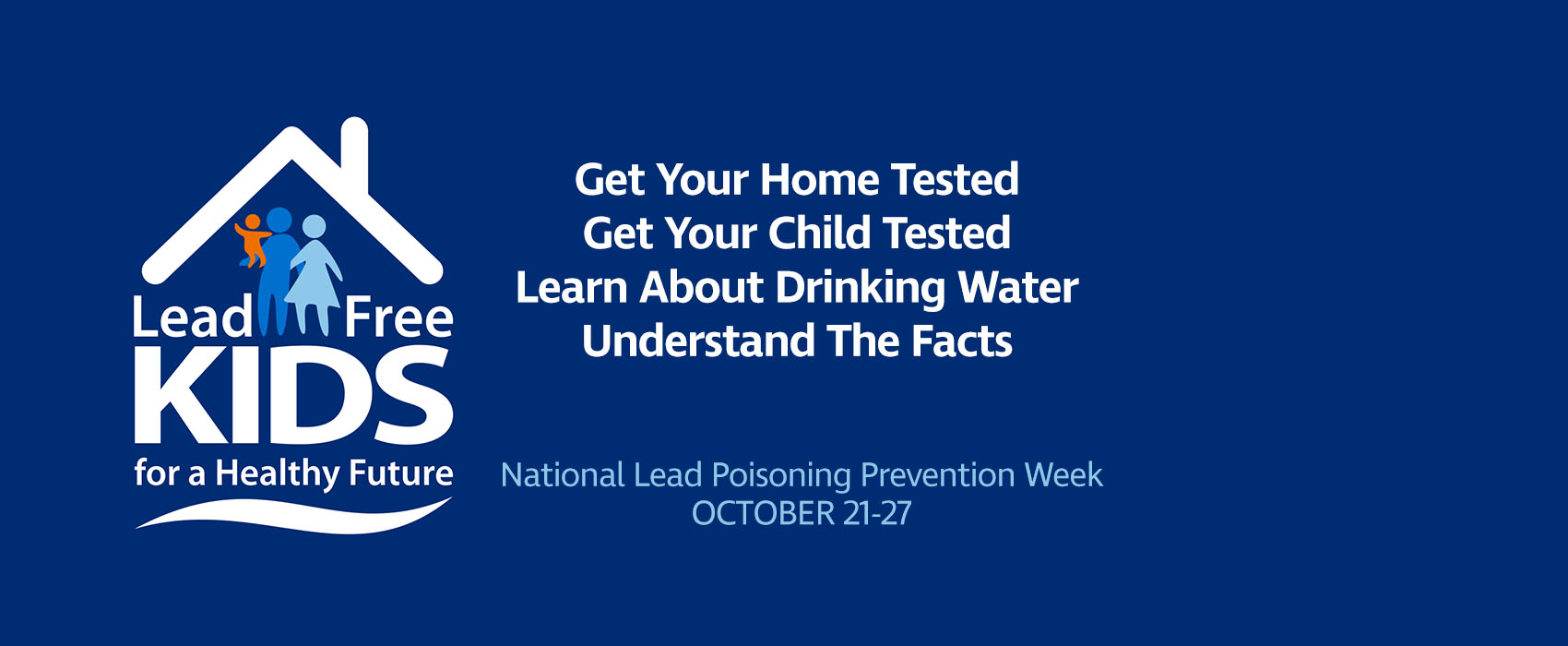October 21 through 27. 2018 is National Lead Poisoning Prevention Week. The theme for this year’s campaign is “Lead Free Kids for a Healthy Future” with the goal of raising awareness to reduce childhood exposure to lead.
Preventing exposure to lead is crucial to a lifetime of good health for children. At this time, no safe blood levels have been identified, and even low levels of lead in the blood can affect a child’s IQ, their ability to pay attention, and their academic achievement. Once a child is exposed to lead, it cannot be corrected.
So how can you prevent exposure to lead? The Centers for Disease Control and Prevention gives the following tips:
- Talk to your state or local health department about testing paint and dust from your home for lead.
- Make sure your child does not have access to peeling paint or chewable surfaces painted with lead-based paint.
- Children and pregnant women should not be present in housing built before 1978 that is undergoing renovation. They should not participate in activities that disturb old paint or in cleaning up paint debris after work is completed.
- Create barriers between living/play areas and lead sources. Until environmental clean-up is completed, you should clean and isolate all sources of lead. Close and lock doors to keep children away from chipping or peeling paint on walls. You can also apply temporary barriers such as contact paper or duct tape, to cover holes in walls or to block children’s access to other sources of lead.
- Regularly wash children’s hands and toys. Hands and toys can become contaminated from household dust or exterior soil. Both are known lead sources.
- Regularly wet-mop floors and wet-wipe window components. Because household dust is a major source of lead, you should wet-mop floors and wet-wipe horizontal surfaces every 2-3 weeks. Windowsills and wells can contain high levels of leaded dust. They should be kept clean. If feasible, windows should be shut to prevent abrasion of painted surfaces or opened from the top sash. Take off shoes when entering the house to prevent bringing lead-contaminated soil in from outside.
- Prevent children from playing in bare soil; if possible, provide them with sandboxes. Plant grass on areas of bare soil or cover the soil with grass seed, mulch, or wood chips, if possible. Until the bare soil is covered, move play areas away from bare soil and away from the sides of the house. If you have a sandbox, cover the box when not in use to prevent cats from using it as a litter box. That will help protect children from exposure to animal waste.
To further reduce a child’s exposure from non-residential paint sources:
- Avoid using traditional folk medicine and cosmetics that may contain lead;
- Avoid eating candies imported from Mexico;
- Avoid using containers, cookware, or tableware to store or cook foods or liquids that are not shown to be lead free;
- Remove recalled toys and toy jewelry immediately from children;
- Use only cold water from the tap for drinking, cooking, and making baby formula (hot water is more likely to contain higher levels of lead and most of the lead in household water usually comes from the plumbing in your house, not from the local water supply);
- Shower and change clothes after finishing a task that involves working with lead-based products such as stained glass, making bullets, or using a firing range.
Quick Links
DHD#10 – WIC – Blood Lead Screening, Testing, and Prevention
National Center for Healthy Housing – Preventing Lead Exposure in U.S. Children
CDC – Lead

